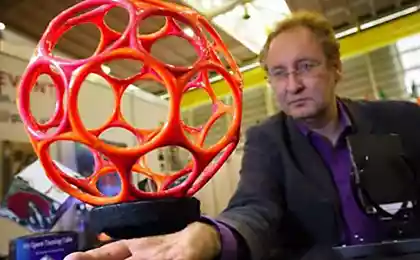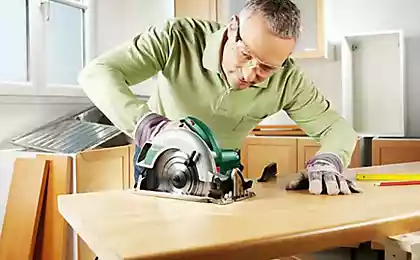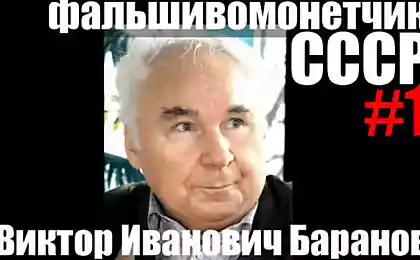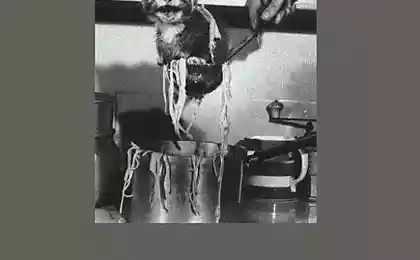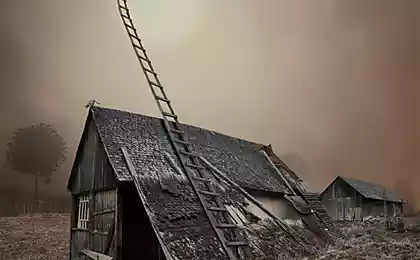691
10 inventions and discoveries that changed the world
To mark the centenary of its opening, the London Science Museum (Science Museum) suggested that the curators selected 10 objects from an existing collection that left the greatest mark on history. Mission to identify the most important discoveries and inventions in the last century was given to the visitors, who, including via the Internet have given a total of 50 thousand. Votes.
9581 voice belongs to install, which makes the X-rays. In 1895, physicist Wilhelm Roentgen (Wilhelm Röntgen) discovered the so-called X-rays ("X" is of unknown origin). Later, the scientist found that they pass through the tissue, and using photographic plates can take pictures of bones. In December of the same year the couple was captured hand X-rays, and this image - the oldest picture of the human body.
via 3DNews

This brochure, which was produced from equipment manufacturers Watson & Sons. By 1930, X-ray machines have been widely distributed and used for the diagnosis of mass diseases and injuries - from broken bones to tumors and tuberculosis.

This device was made by Russell Reynolds (Russell Reynolds) just a few months after the discovery of X-rays. One of the oldest in the world of machines for the first time allowed to look inside the body without a scalpel.

Second place went to penicillin (6825 votes). Fungal spores, which can be seen through the glass, led to the discovery by Alexander Fleming (Alexander Fleming) first antibiotic in 1928. By the mid-1940s as a result of carried out in the United Kingdom and the United States work penicillin began to be used in the treatment of people. This marked the beginning of a wave of new drugs that make diagnosis and treatment of bacterial infections are much safer than before.

In third place - the double helix of DNA with 6725 votes. In the photo shows the reconstruction of the very first model of the DNA molecule with some original elements of which were used by Francis Crick (Francis Crick) and James Watson (James Watson) in 1953. Their breakthrough made it possible to understand the processes of gene transfer and cell activity.

In the fourth place 4649 voters identified capsule Apollo 10. 40 years ago, three men - Thomas Stafford (Stafford Thomas), Eugene Cernan (Eugene Cernan) and John Watts Young (John Watts Young) circled around the Moon in this module as a rehearsal of the first landing on Earth satellite, which took place two months later.
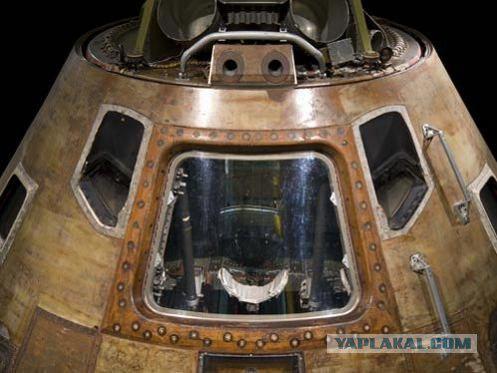
Fifth place votes and 3985 from a rocket engine V2. Invented in 1942, it was used as a weapon defeated in World War II party, but shaped the missile for decades to come. Creator V2 Wernher von Braun (Wernher von Braun) moved after the war to the United States, where he worked in the program of intercontinental ballistic missiles. Subsequently von Braun worked with NASA and built the rocket Saturn V, runs a the Apollo 11 to the moon.

"Rocket Stephenson» (Stephenson's Rocket) received 3533 votes and sixth place. After reaching a record speed "Reynhilskih tests» (Rainhill Trials, Lancashire, United Kingdom) in 1829, was 48 km / h, "Rocket" demonstrated to the world the benefits of the mobile unit to propel the vehicle. Robert Stephenson (Robert Stephenson) designed a machine, using the basic principles that have been used to create steam locomotives. On the history of steam engines can be found in our material.

In seventh place with 3472 votes turned the computer Pilot ACE - one of the first universal electronic computers, which launched the first program of May 10, 1950. At that time it was the most powerful computer in the world. With its creation used development Alan Turing (Alan Turing).

Aspirated engine preferred 3457 voters. Thomas Newcomen invented him (Thomas Newcomen) in 1712. Featured in the photo the model is built by Francis Thompson (Francis Thompson) for coal developments in Debrishire in 1791 and is the oldest such structure remaining in the original form. The atmospheric engine solved many energy problems in his day and became one of the fundamental elements of the industrial revolution. He unlocks previously inaccessible coal reserves by pumping water out of deep mines. The triumph of engineering also marked the beginning of dependence on fossil fuels.

Car Ford Model T was awarded ninth place and the 3231 vote. Together with the introduction of new ideas in the field of mass production of Ford Motor Company helped popularize motoring. "Fordism» («Fordism») became a familiar metaphor for the release of any commodity in large quantities - a philosophy that today is one of the axioms of business.
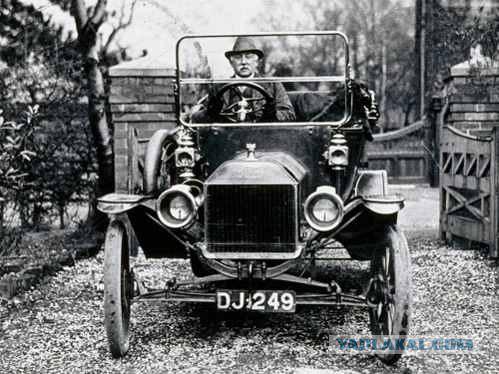
Last place went to the 2694 vote is not the least important invention - the electric telegraph. Charles Wheatstone (Charles Wheatstone) and William Cook (William Cooke) patented the world's first mobile telecommunication device in 1837. Their telegraph was first used electricity for communication over long distances.
© et

Source:
9581 voice belongs to install, which makes the X-rays. In 1895, physicist Wilhelm Roentgen (Wilhelm Röntgen) discovered the so-called X-rays ("X" is of unknown origin). Later, the scientist found that they pass through the tissue, and using photographic plates can take pictures of bones. In December of the same year the couple was captured hand X-rays, and this image - the oldest picture of the human body.
via 3DNews

This brochure, which was produced from equipment manufacturers Watson & Sons. By 1930, X-ray machines have been widely distributed and used for the diagnosis of mass diseases and injuries - from broken bones to tumors and tuberculosis.

This device was made by Russell Reynolds (Russell Reynolds) just a few months after the discovery of X-rays. One of the oldest in the world of machines for the first time allowed to look inside the body without a scalpel.

Second place went to penicillin (6825 votes). Fungal spores, which can be seen through the glass, led to the discovery by Alexander Fleming (Alexander Fleming) first antibiotic in 1928. By the mid-1940s as a result of carried out in the United Kingdom and the United States work penicillin began to be used in the treatment of people. This marked the beginning of a wave of new drugs that make diagnosis and treatment of bacterial infections are much safer than before.

In third place - the double helix of DNA with 6725 votes. In the photo shows the reconstruction of the very first model of the DNA molecule with some original elements of which were used by Francis Crick (Francis Crick) and James Watson (James Watson) in 1953. Their breakthrough made it possible to understand the processes of gene transfer and cell activity.

In the fourth place 4649 voters identified capsule Apollo 10. 40 years ago, three men - Thomas Stafford (Stafford Thomas), Eugene Cernan (Eugene Cernan) and John Watts Young (John Watts Young) circled around the Moon in this module as a rehearsal of the first landing on Earth satellite, which took place two months later.

Fifth place votes and 3985 from a rocket engine V2. Invented in 1942, it was used as a weapon defeated in World War II party, but shaped the missile for decades to come. Creator V2 Wernher von Braun (Wernher von Braun) moved after the war to the United States, where he worked in the program of intercontinental ballistic missiles. Subsequently von Braun worked with NASA and built the rocket Saturn V, runs a the Apollo 11 to the moon.

"Rocket Stephenson» (Stephenson's Rocket) received 3533 votes and sixth place. After reaching a record speed "Reynhilskih tests» (Rainhill Trials, Lancashire, United Kingdom) in 1829, was 48 km / h, "Rocket" demonstrated to the world the benefits of the mobile unit to propel the vehicle. Robert Stephenson (Robert Stephenson) designed a machine, using the basic principles that have been used to create steam locomotives. On the history of steam engines can be found in our material.

In seventh place with 3472 votes turned the computer Pilot ACE - one of the first universal electronic computers, which launched the first program of May 10, 1950. At that time it was the most powerful computer in the world. With its creation used development Alan Turing (Alan Turing).

Aspirated engine preferred 3457 voters. Thomas Newcomen invented him (Thomas Newcomen) in 1712. Featured in the photo the model is built by Francis Thompson (Francis Thompson) for coal developments in Debrishire in 1791 and is the oldest such structure remaining in the original form. The atmospheric engine solved many energy problems in his day and became one of the fundamental elements of the industrial revolution. He unlocks previously inaccessible coal reserves by pumping water out of deep mines. The triumph of engineering also marked the beginning of dependence on fossil fuels.

Car Ford Model T was awarded ninth place and the 3231 vote. Together with the introduction of new ideas in the field of mass production of Ford Motor Company helped popularize motoring. "Fordism» («Fordism») became a familiar metaphor for the release of any commodity in large quantities - a philosophy that today is one of the axioms of business.

Last place went to the 2694 vote is not the least important invention - the electric telegraph. Charles Wheatstone (Charles Wheatstone) and William Cook (William Cooke) patented the world's first mobile telecommunication device in 1837. Their telegraph was first used electricity for communication over long distances.
© et

Source:





